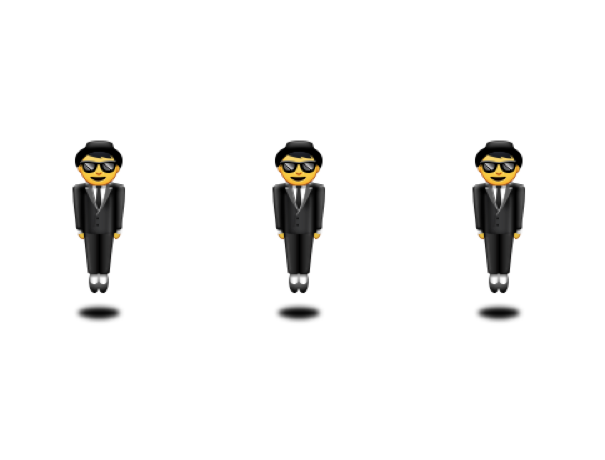In the vast realm of surreal imagery and digital culture, few visuals have stirred as much curiosity and interpretation as the man in business suit levitating. Whether spotted in memes, artworks, or metaphorical conversations, this peculiar image of a sharply dressed man defying gravity encapsulates more than a surreal phenomenon—it embodies modern existential dilemmas, corporate disillusionment, and imaginative escapism.
This article explores the symbolic roots, pop-cultural significance, artistic inspiration, and philosophical undertones of the man in business suit levitating. Beyond just a viral image or a design quirk, this concept captures the paradoxes of contemporary life in a strikingly relatable way.
The Origins of the Image: Where It All Began
The phrase “man in business suit levitating” has grown familiar due to its unexpected appearance in emoji catalogs. Introduced in Unicode 7.0 and later popularized through emoji libraries like those by Apple, Microsoft, and Google, the levitating man emoji was originally based on the logo of the 2 Tone Records music label—a record company prominent in the UK ska revival scene of the late 1970s.
This figure, known as the “rude boy,” was famously associated with bands like The Specials and Madness. He stood confidently in a suit, hat, and sunglasses—projecting a mix of rebellion, style, and cultural crossover. When Unicode adopted this symbol, it transformed from music iconography into a somewhat mysterious emoji. The levitating aspect was an added surreal twist—now, the man didn’t just stand tall; he floated.

The Symbolism Behind the Floating Executive
From a visual standpoint, the man in business suit levitating evokes an immediate reaction. It looks out of place—too formal to float, too composed to defy gravity. But therein lies its symbolic depth.
In modern corporate life, the business suit is a uniform—a sign of professionalism, conformity, and sometimes, emotional detachment. Levitation, on the other hand, represents transcendence, liberation, or detachment from worldly affairs. Combining these two elements creates a paradox that many interpret as:
- A satire on work culture: The levitating man may mock the corporate world’s obsession with appearances and hierarchy.
- A dream of escape: Many workers fantasize about “floating away” from deadlines, stress, and the 9-to-5 grind.
- A depiction of emotional dissociation: In a hyper-busy world, people often feel detached from reality, almost as if they’re floating through life on autopilot.
The image thus resonates on both humorous and profound levels—offering viewers a mirror to their own aspirations, frustrations, and inner yearnings.
Pop Culture Embrace: From Emojis to Art
The levitating businessman has not remained confined to Unicode. It has inspired visual artists, digital designers, satirical cartoonists, and meme creators. On Instagram and Pinterest, variations of the image pop up frequently—sometimes reimagined with wings, sometimes accompanied by floating briefcases, sometimes even set against space-like backdrops.
TV shows and web series, too, have occasionally played with the theme of floating professionals. These floating characters, often dressed in stiff business attire, serve as metaphors for people who have lost their grounding due to corporate overindulgence or ambition.
Artists in urban areas have painted murals that feature the man in business suit levitating—standing as a representation of people chasing success, yet disconnected from the roots of personal happiness and community.
The Psychology of Floating Figures
From a psychological point of view, images of levitation tap into deep-seated human desires and fears. In dreams, levitating often symbolizes freedom or a release from limitations. However, when this levitation is involuntary—or placed in an unexpected context like the corporate world—it can signal alienation or loss of control.
Psychologists point out that the appeal of the levitating businessman lies in how much people project onto him. For some, he’s aspirational—a man who has mastered balance and is rising above stress. For others, he’s tragic—someone so absorbed in material pursuits that he’s become detached from the human experience.
This duality contributes to the image’s viral power. Everyone sees something different, which keeps the symbol alive in digital storytelling.
Levitation as a Visual Metaphor in Media
Across media, levitation often signifies power, holiness, or enlightenment. In religious iconography, saints and sages are depicted floating above the earth as a sign of divine favor. In superhero lore, flight is a power granted to those beyond the ordinary.
The man in business suit levitating, then, appropriates this divine or superhuman trait and applies it to a mundane figure—the modern businessman. This mismatch invites us to ask: Is the man enlightened, or is he absurd?
Filmmakers and photographers frequently borrow from this juxtaposition. Consider the visual humor of a stiff-suited man casually floating over a cityscape. It might symbolize someone who has succeeded so well they’ve escaped worldly constraints—or someone so lost in ambition they’re no longer anchored to the real world.
The Main Keyword in the Spotlight: Man in Business Suit Levitating
The fascination with the man in business suit levitating shows no sign of waning. Whether used as a meme, a metaphor, or a philosophical prompt, the image resonates because it combines contradiction and curiosity. He is formal yet unbound, professional yet transcendent.
This levitating man serves as an icon for a generation navigating uncertainty. He represents both the desire to rise and the risk of floating too far from reality. In this sense, he is every bit a product of 21st-century life—both inspiring and cautionary.
As people seek new ways to process the complexities of daily existence—burnout, tech overload, shifting identities—the levitating man offers a strangely comforting image. He is not falling. He is not weighed down. He is suspended in a moment of surreal grace, just like many of us hope to be.
Why the Image Keeps Returning
Part of the reason this image refuses to fade is because it is so open-ended. Unlike logos or symbols with fixed meanings, the man in business suit levitating adapts. In a digital meme, he’s ironic. In fine art, he’s symbolic. In corporate satire, he’s biting. And in personal interpretation, he can be deeply emotional.
This flexibility makes him a perfect fit for the internet age—where symbols evolve rapidly and meanings are layered. Each new platform or cultural shift brings a fresh interpretation of the floating man.
Moreover, his design is minimalist enough to invite customization. Artists can change the suit color, alter his posture, or reposition his levitation—all while retaining the essence. This means he can be endlessly recontextualized without losing his core appeal.
From Absurdity to Insight: What We Can Learn
On the surface, the man in business suit levitating might look silly or random. But spend more than a moment looking, and you’ll realize how it holds a mirror to modern anxieties:
- The pressure to rise above competition in the corporate world.
- The detachment that technology and routine often bring.
- The fantasy of leaving stress behind without quitting.
This image becomes a modern parable. It speaks to the conflict between appearance and reality, between ambition and contentment. Just like many workers who appear composed but feel adrift, the levitating man wears his suit as armor—while quietly floating away from solid ground.
A Symbol for the Future
As work continues to shift—through AI, remote models, and shifting cultural values—the image of a man in business suit levitating might evolve into something even more poignant.
He might soon come to represent not detachment, but adaptability—someone who hovers because he’s not tied down to old ideas. Or he may evolve into a critique of future capitalism, where even levitation is monetized and branded.
Either way, the man’s story isn’t over. He floats on, waiting for the next interpretation, the next reinvention.
FAQs
What does the man in business suit levitating emoji mean?
It generally represents a surreal, humorous, or symbolic idea of someone floating above reality, often interpreted as a critique or satire of corporate life.
Where did the levitating businessman originate?
He was inspired by the “rude boy” logo from 2 Tone Records and later became a Unicode emoji representing levitation and surrealism.
Is the image used in modern art?
Yes, many artists have adopted the levitating businessman in murals, digital art, and installations to critique modern work culture.
Why is he levitating in a suit?
The juxtaposition is intentional—combining formality with surrealism to highlight absurdity, detachment, or transcendence.
Is it a serious or comedic image?
It can be both. Depending on context, it can be used for humor, satire, philosophy, or visual commentary.
Conclusion: Grounded in Wonder, Floating in Meaning
The man in business suit levitating is more than just an emoji or an internet joke. He is an ever-evolving metaphor for modern identity. He stands at the intersection of style and substance, ambition and absurdity.
Whether we see him as comic relief, cautionary tale, or quiet aspiration, one thing is clear—his levitation is no accident. It’s a response to the weight of expectations, a quiet protest against rigidity, and perhaps a silent wish to rise above the noise.



